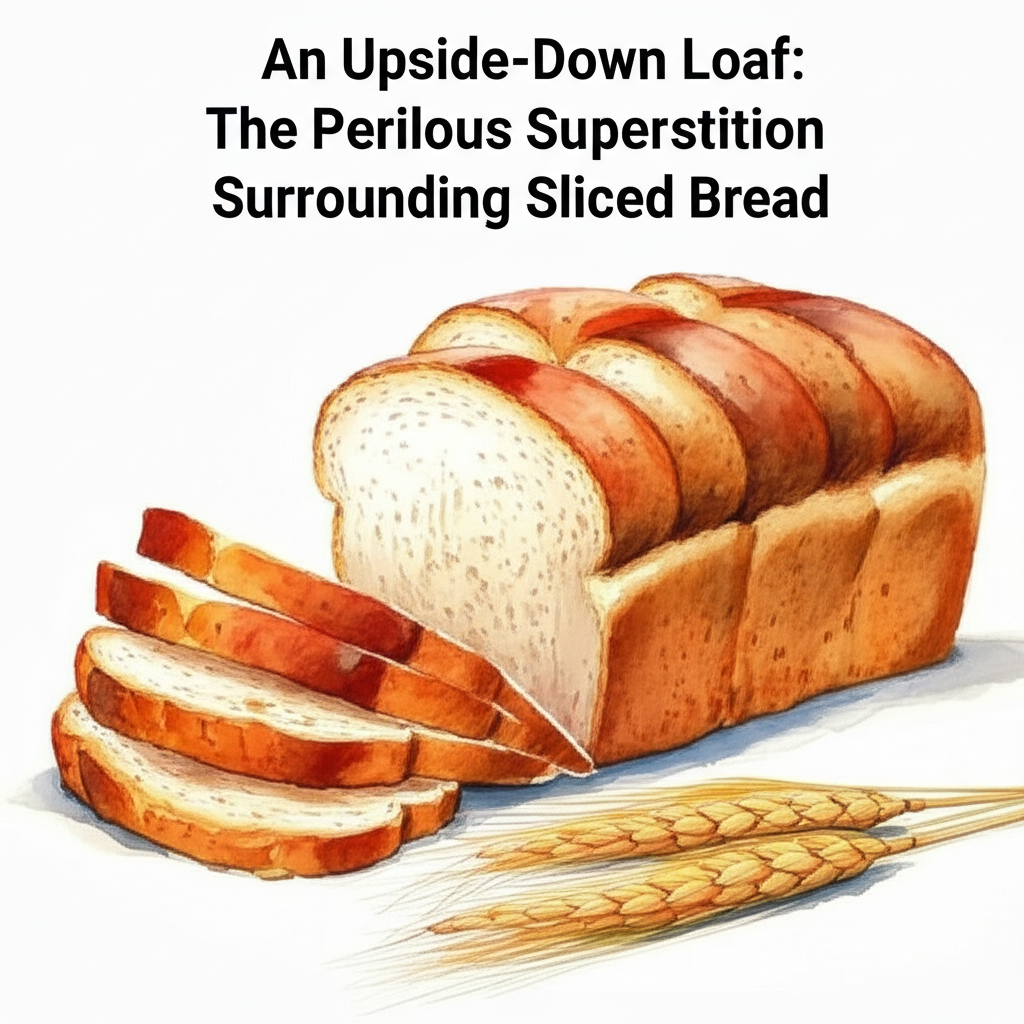
Bread, a dietary staple deeply interwoven with human history, holds a revered position that stretches back to the dawn of agriculture in Neolithic times. This veneration has given rise to numerous customs and superstitions, one of the most intriguing being the belief that turning a sliced loaf of bread upside down is perilous. This article delves into the historical background, cultural context, and evolution of this widespread superstition.
Bread’s significance is evident in religious texts and practices. In the Old Testament, wheat and bread symbolize the earth’s fertility, while in the New Testament, bread transcends to become the ultimate gift from God to humankind. Matthew 26:26 states, ‘Jesus took bread, and blessed it, and brake it, and gave it to the disciples, and said, Take, eat; this is my body.’ For centuries, Christians have made the sign of the cross over new loaves, and from the thirteenth century, bakers commonly marked loaves with a cross. Consequently, inverting a loaf could be seen as a sacrilegious act, disrespecting the sacred nature of the bread and its connection to religious belief.
The reverence for bread predates Christianity, extending to ancient Greek and Roman cultures. Hestia, the Greek goddess of the hearth, home, and family, and her Roman counterpart Vesta, were considered patrons of bread-making. Traditionally, they received the first sacrificial offering in the household. One theory posits that turning a loaf upside down was an insult to the goddess of the hearth. Offending her was thought to jeopardize the sustenance and well-being of the family. In England, this superstition manifested as the belief that turning a sliced loaf upside down would cause the breadwinner of the family to fall ill, reinforcing the link between the bread and the family’s prosperity.
While the association with deities and household welfare provides a compelling explanation, an alternative theory emerges from eighteenth-century France. Public executioners in France were figures shrouded in superstition and social isolation. Their houses were marked with red paint, they had designated pews in church, and their families were ostracized. Contact with the executioner or his belongings was considered unlucky, especially touching his bread. To prevent accidental consumption, bakers would bake a separate loaf specifically for the executioner and deliberately turn it upside down. This visual cue served as a warning to others, ensuring they avoided it. This practical measure might have inadvertently contributed to the development of a superstition surrounding inverted bread.
Today, while the fear of divine retribution or attracting evil spirits has largely diminished, the superstition persists in some cultures. In many parts of rural France, it is still considered improper to serve or store a loaf upside down. Whether rooted in religious reverence, ancient mythology, or a pragmatic solution to a societal stigma, the superstition surrounding an upside-down loaf of bread after slicing serves as a fascinating reminder of the enduring power of cultural beliefs and the enduring symbolic weight of a simple loaf.